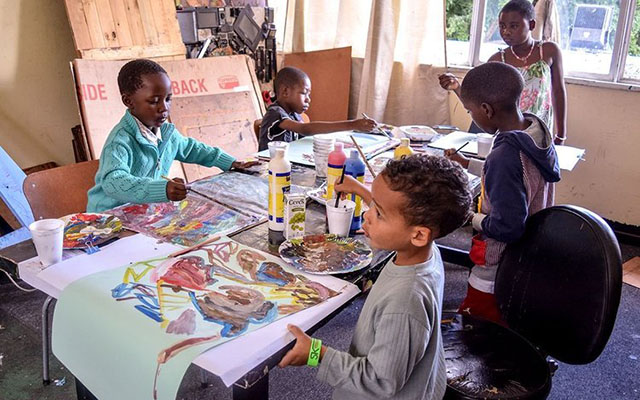Zim on course to end TB by 2030


An infected lung
Vivian Mugarisi Herald Correspondent
Zimbabwe is on course towards ending tuberculosis (TB) within the Sustainable Development Goals (SDGs) framework by 2030, which the country has fully adopted.
This is despite numerous challenges Government is still trying to address, health experts have said.
HIV, Aids and TB programme deputy director in the Ministry of Health and Child Care Dr Charles Sandy says continuous efforts to deal with discrimination, stigma, marginalisation and focus on key populations will help the country meet the target in ending TB.
“TB prevalence and incidences have gone down by an average of 10 percent per year for the last five years and if we maintain that trajectory of incidence reduction, it means we would meet the incidence target,” he said in an interview.
“If you look at the trajectory in terms of deaths of people living with HIV who have TB and general TB without HIV, facts show that we are on the decline, we might actually meet the target before 2030.
“What makes a difference is how well we are able to ensure there is good and easy access for early test detections and how well we continue to strengthen the collaborative approach in managing HIV and TB.”
Dr Sandy said the goal to end TB within the targets could only be achieved if there was more investment towards TB response.
TB response in Zimbabwe is largely depended on donor funding, with the donors contributing around 80 percent towards procurement of drugs and other commodities.
The National Aids Council has set aside $490 000 for procurement of multi-drug resistance TB drugs, a huge leap from $200 000 which was contributed from the National Aids Trust Fund in 2016.
Money availed from the fiscus has been towards payment of the salaries.
According to the World Health Organisation, investments in low and middle income countries of at least $2 billion fell short of the required investment needed for TB care and prevention in 2016.
An extra of at least $1 billion from the current funding is needed annually for the development of new vaccines, diagnostics and medicines.
The report also suggests that the gap will widen if funding levels are not increased.
Dr Sandy said there was need to address stigma related to TB at community levels, within the health system and within the leadership.
He said new national guidelines had been put in place to target high density urban settings like Hopley, Epworth, Whitecliff, among other informal settlements, which has seen an increase in TB incidences due to poor ventilation and over crowdedness.
“The major challenge is on community responses and also on the level of awareness on the issue of TB,” said Dr Sandy. “I think we need to strengthen the capacity of civil society organisations and community based organisations to be part of national TB response so that we improve coverage of our services.
“We have come up with a new guideline which will operationalise strategies to strengthen advocacy, communication and social mobilisation and we hope that as we roll out activities in the new guidelines, will be moving towards addressing stigma.
“We have identified and we still have high risk population groups where we need to put special targeted focus and these groups include prisoners, people involved in mining activities, both legal and illegal, and also collaboration with other countries for cross border traders to access health services easily.”
The International Union of Tuberculosis and Lung Diseases (The Union)’s country director Dr Christopher Zishiri said Zimbabwe did tremendously well in TB management, but more needed to be done to account for missing cases of the disease.
“The key point is that we are still missing 30 percent of our cases and we have to find them,” he said.
“So, we have put in place a door to door approach as a pilot to see whether it will work in communities to find these cases among high risk communities.
“We have also, through the USAID Challenge TB and Global Fund, trucks in hard to reach areas where we are providing medicines and we are still looking for patients passively, screening them and doing gene Xpert on them so that we can quickly diagnose the patients.
“We are also going to introduce new guidelines in the country for treatment of drug resistant TB because it is another increasing threat.”
According to The Union, in 2014, the country’s case detection rate stood at 70 percent, meaning there are still at least 30 percent of TB cases being missed annually.
Contact tracing has been one of the effective methods used to find the missing cases which has seen people like Takura Chinguwo (44), who got tested for TB in 2014, but failed to collect his results at Chiredzi Clinic due to financial constraints, being identified.
“I was initially diagnosed of drug susceptible TB in 2012 and I completed my treatment, but fell ill again in 2014 and went for testing at Chiredzi Clinic,” said Chinguwo of Chingwizi Holding Camp in Masvingo.
“I did not go back to get my results because I did not have money for transport, but the nurses and a village health workers traced me to the camp, told me I had multi-drug resistant TB and they put me into isolation.”
During that period, Chinguwo was living with his family at Chingwizi Holding Camp, which was created to accommodate thousands of homeless people affected by floods at Tokwe Mukosi Dam in February 2014.
Permanent Secretary for Health and Child Care Dr Gerald Gwinji said though the country was on track to end TB within the SDG trajectory, it was important to manage ordinary TB to avoid the development of multi drug and extreme drug resistant TB.
He said it was key to diagnose TB which doesn’t present through a cough and where someone is not producing a sputum, though it does not spread.
Dr Gwinji stressed the need to accelerate diagnosis of TB in children, which has been one of the major challenges in the country’s TB response.
“Our efforts now is to try make clinicians know how to diagnose TB in children,” he said.
“We do have a group of technicians and specialists who are mentoring others in terms of sharpening their skills in diagnosing TB in children because it is a challenge and it’s a population where TB does not present as it does in adults.”
The United Nations sustainable development goal number three targets a 90 percent reduction in TB deaths, an 80 percent reduction in TB incident rate and ensuring all TB affected families are no longer facing catastrophic costs when accessing TB treatment by 2030.
This will lead countries to meeting the WHO End TB strategy deadline of 2035.
Zimbabwe is still one of eight countries in Africa belonging to the top 30 countries with high TB, TB/HIV and DR-TB burden in the world.
At least 242 new cases of TB are being registered per 100 000 people in Zimbabwe, with HIV being the major driver of TB, with an estimated 70 percent co-infection rate.







Comments